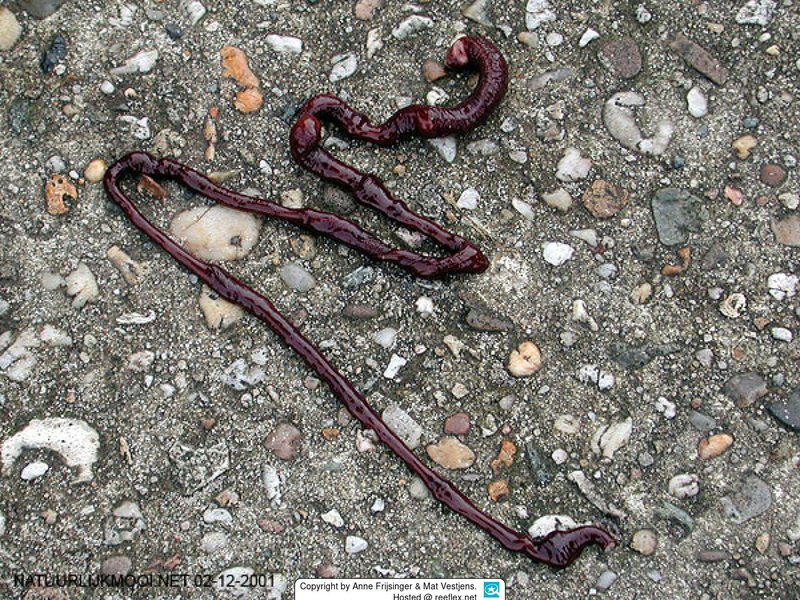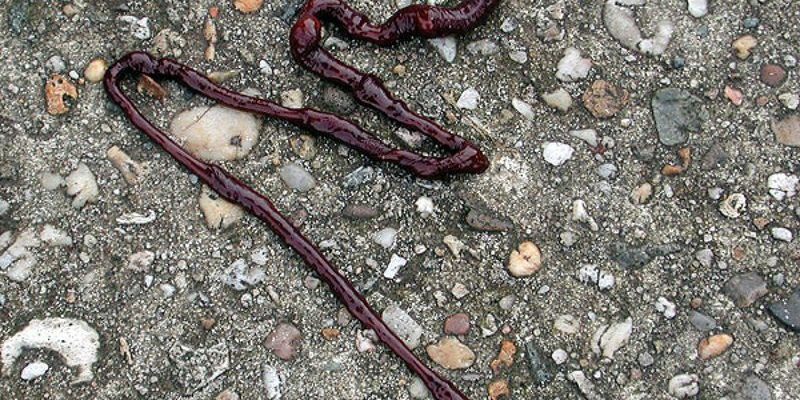
Bootlace worms, scientifically known as *Lineus longissimus*, are intriguing for several reasons. They can grow to be incredibly long—sometimes over 100 feet! Yet, what lies beneath the surface is even more compelling: their fossil records. When we dig into these fossils, we’re not just looking at remnants of ancient marine life; we’re piecing together a puzzle that reveals the evolution of life on Earth. So, let’s dive deeper into the world of bootlace worm fossils and their ancient relatives.
What Are Bootlace Worms?
Bootlace worms belong to a group called **nemerteans**. These worms are found primarily in marine environments and are known for their unique body structure. They possess a long, slender, and almost jelly-like appearance that enables them to glide through water effortlessly. You might be wondering, “Why the name ‘bootlace’?” It’s because their shape resembles a long shoelace, and they can sometimes be found tangled up, much like a knot in a shoelace!
One of the most interesting aspects of bootlace worms is their ability to regenerate. If they lose a part of their body, they can regrow it—much like how a lizard can regrow its tail. This ability not only helps them survive in the wild but also opens discussions about the limits of regeneration in the animal kingdom.
The Fascinating Fossil Record of Bootlace Worms
Now, let’s talk about fossils. Fossils of bootlace worms aren’t as common as those of harder-shelled creatures, but when we do find them, they provide valuable insights into the past. These fossils are typically imprints or traces left in sedimentary rock, showcasing the body structure and movement patterns of these ancient creatures.
The oldest known nemertean fossils date back to the **Cambrian period**, roughly **500 million years ago**. This period was a time of rapid evolution when many organisms started to develop unique adaptations. Understanding these ancient relatives of bootlace worms helps scientists piece together the evolutionary timeline of marine life.
Also, studying these fossils can give us clues about the environments they thrived in. For instance, scientists discovered that certain fossilized bootlace worms were found in shallow marine sediments, indicating that they preferred warm, nutrient-rich waters.
Ancient Relatives of Bootlace Worms
So, who were the ancient relatives of bootlace worms? The story goes back millions of years when various nemertean species inhabited Earth’s oceans. While some of their relatives may have perished, their lineage has survived through time, giving way to modern bootlace worms.
One fascinating ancient relative is the **Palaeonemertea**, which were more robust than today’s bootlace worms. They sported a hard protective covering, a feature that helped them thrive in the predatory world of ancient marine ecosystems. Examining the characteristics of these ancient relatives allows us to understand how bootlace worms adapted over time to their environments.
Moreover, the evolutionary journey from ancient nemerteans to modern bootlace worms shows us how resilience and adaptability define life. It’s like watching a family tree grow, with branches that twist and turn, reflecting the struggles and triumphs of survival.
Why Are Bootlace Worm Fossils Important?
Understanding bootlace worm fossils is essential for several reasons. First, they help us learn about **evolutionary biology**. Fossils act as a historical record, allowing scientists to trace changes in anatomy and behavior over millions of years. This research can shed light on how species adapt to changing environments, something crucial in the face of today’s climate crisis.
Second, these fossils contribute to our knowledge of ancient ecosystems. By analyzing where bootlace worm fossils are found, researchers gain insights into what past marine environments looked like. It’s akin to finding clues in an ancient detective novel, where each fossil tells a chapter of the Earth’s story.
Finally, bootlace worm fossils enrich our appreciation for marine biodiversity. They remind us that life on our planet has a rich and complex history filled with unique adaptations and survival strategies.
The Process of Fossilization
You might be curious about how bootlace worm fossils even form. The process of fossilization isn’t straightforward. When an organism dies, it typically needs to be buried quickly to prevent decay. This could happen in sediment on the ocean floor, where layers gradually build up, creating pressure over time.
Once buried, minerals seep into the remains, replacing organic material and forming fossils. While many creatures can leave behind hard parts that fossilize well, soft-bodied creatures like bootlace worms pose more of a challenge. That’s why finding their fossils can be rare and valuable.
These rare finds often appear as **trace fossils**, which are footprints or burrows rather than bones. They tell us about the behavior of bootlace worms in their ancient environments, providing a glimpse into their lives millions of years ago.
Modern Bootlace Worms: What Can We Learn?
Today, studying modern bootlace worms can provide clues about their ancient relatives. Scientists are increasingly interested in their behavior, habitat, and adaptability. For instance, understanding how they respond to environmental changes can inform conservation efforts and help us predict how marine species might adapt to changing oceans.
Additionally, comparing the genetic makeup of modern bootlace worms to their ancient counterparts offers insights into evolution. By analyzing DNA and comparing it to fossils, researchers can start to see the lineage and adaptations that have occurred over time.
This knowledge is particularly valuable as we face significant ecological challenges today. By understanding the resilience of bootlace worms and their survival tactics, conservationists can aim to protect vulnerable species.
Bootlace worms and their ancient relatives take us on an awe-inspiring journey through time. From their fascinating biology to the importance of their fossils, these creatures remind us of the complex tapestry of life on Earth. As we study their past, we gain valuable insights into the present and future of marine biodiversity.
So next time you think about the ocean, remember that beneath the waves, creatures like the bootlace worm carry with them stories written in the sands of time. By appreciating their history, we can better understand and protect our planet’s diverse ecosystems. This is not just about ancient fossils—it’s about ensuring that the legacy of these mesmerizing creatures continues to thrive for generations to come.

